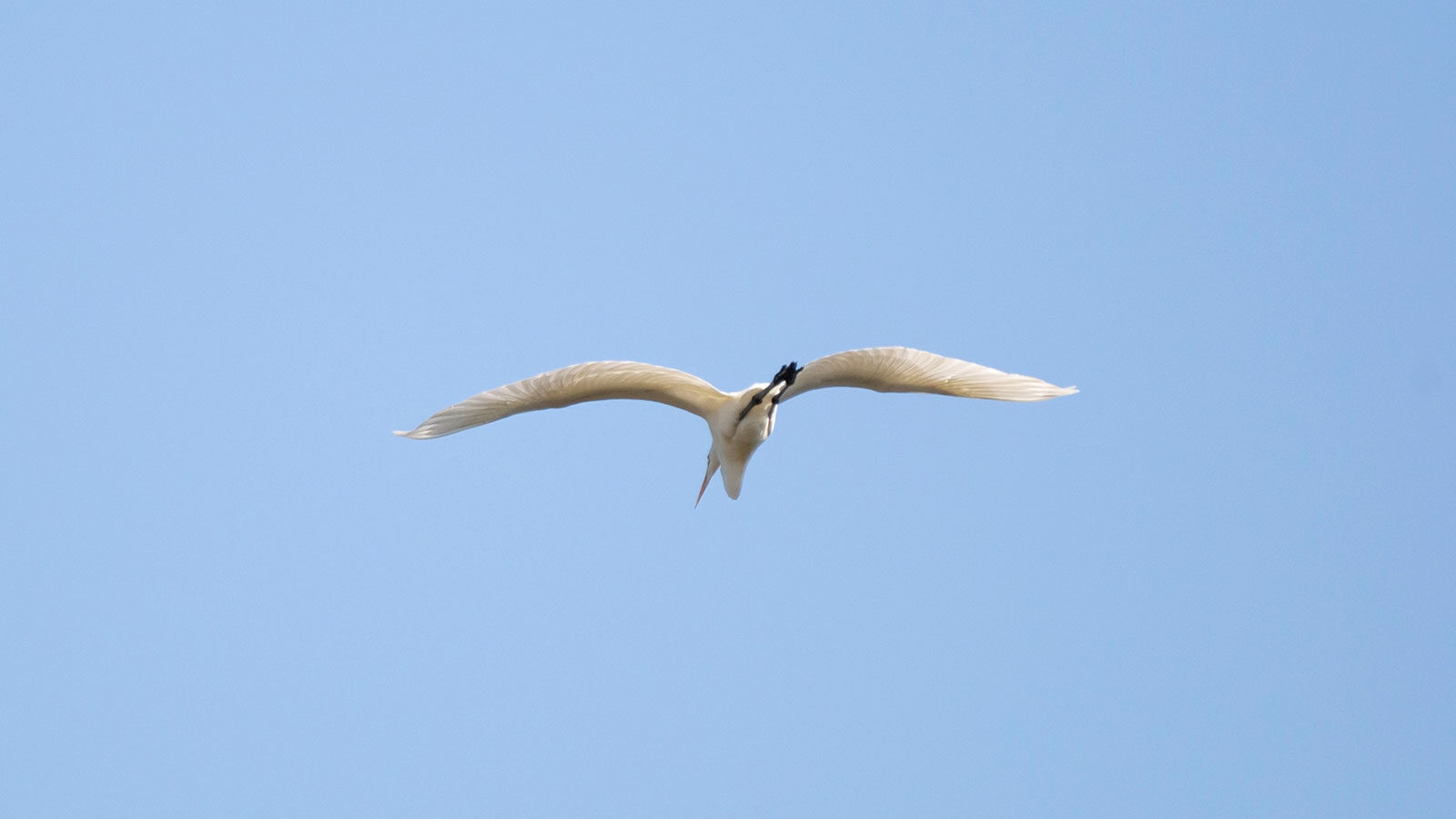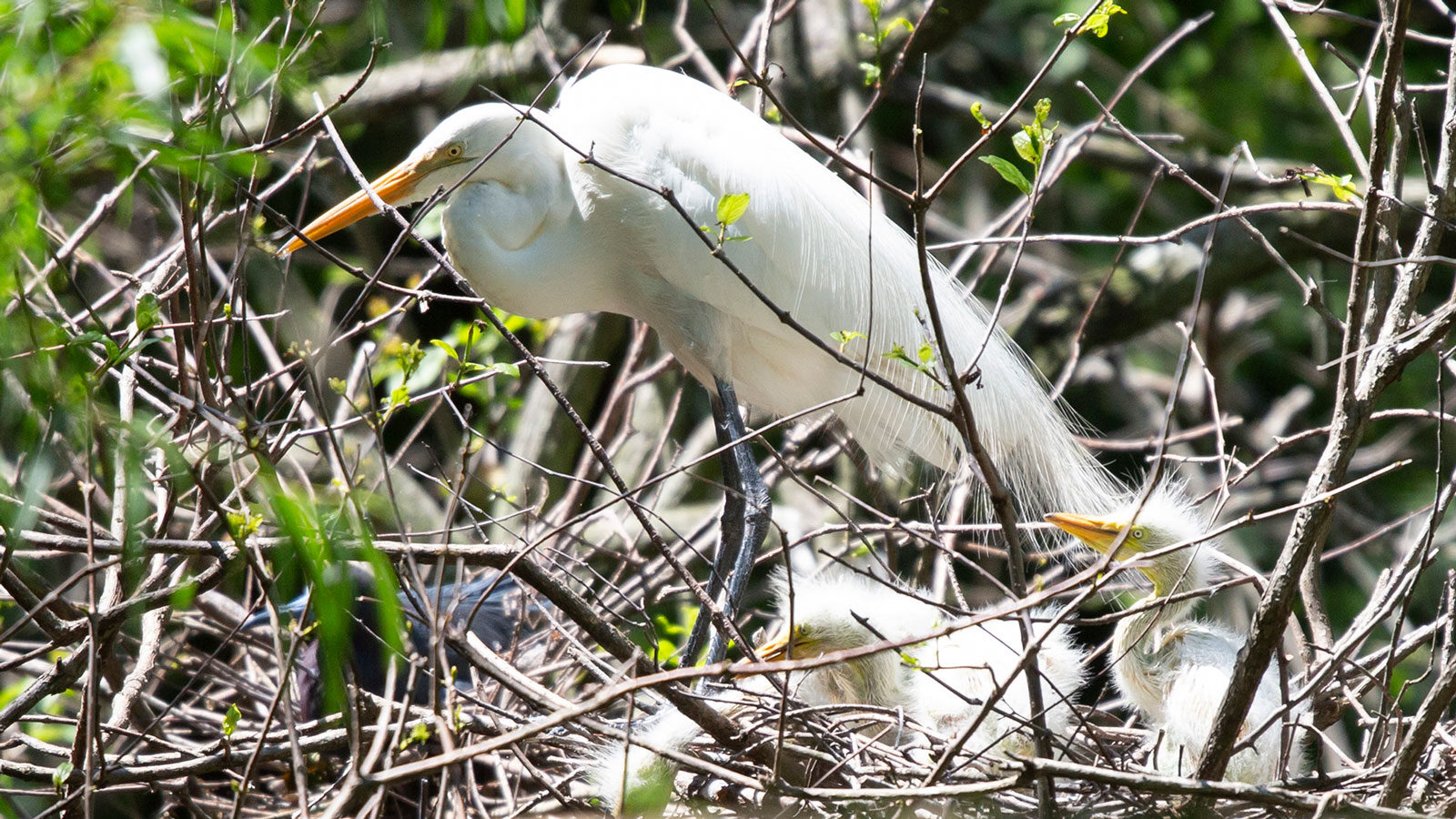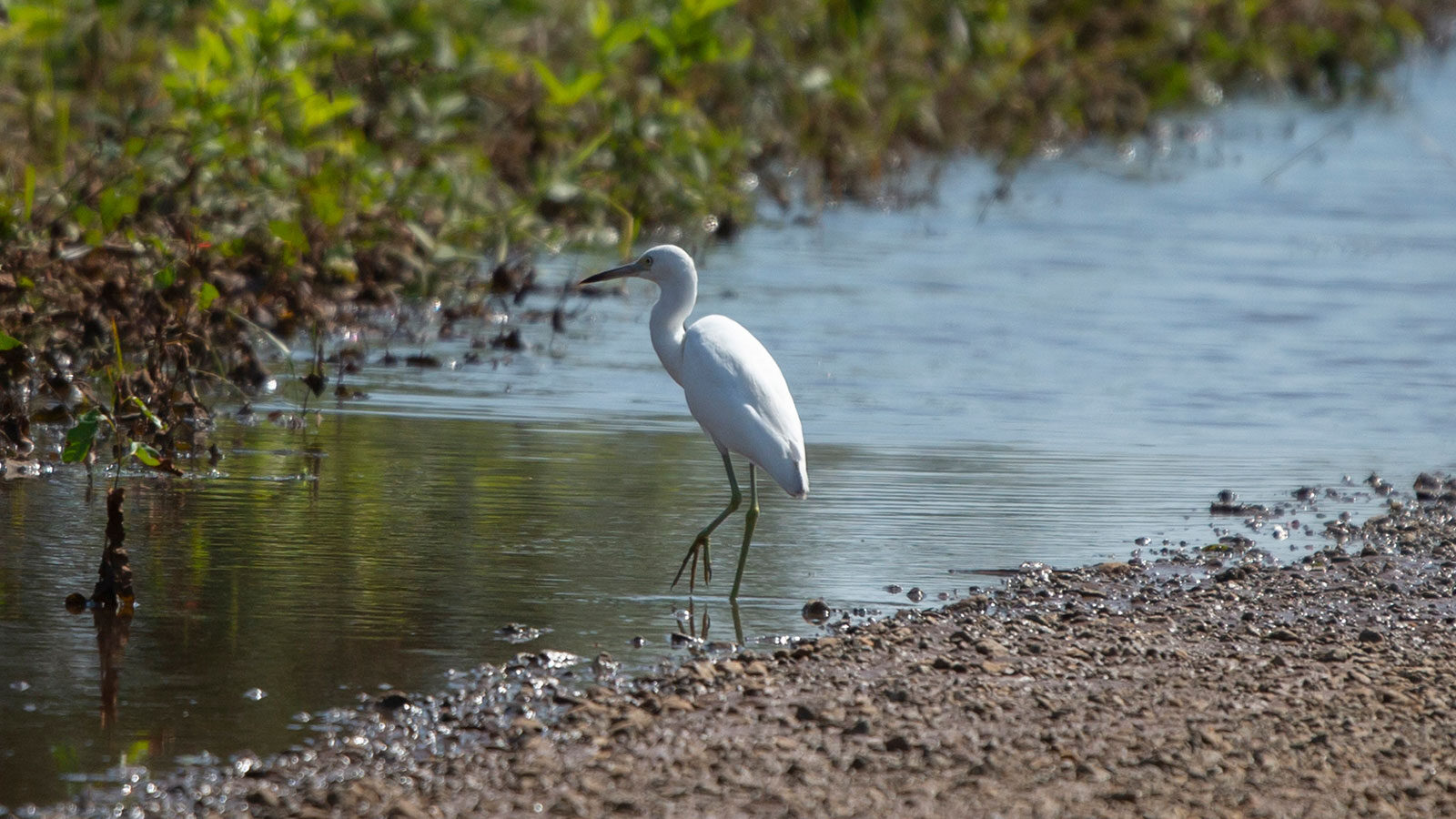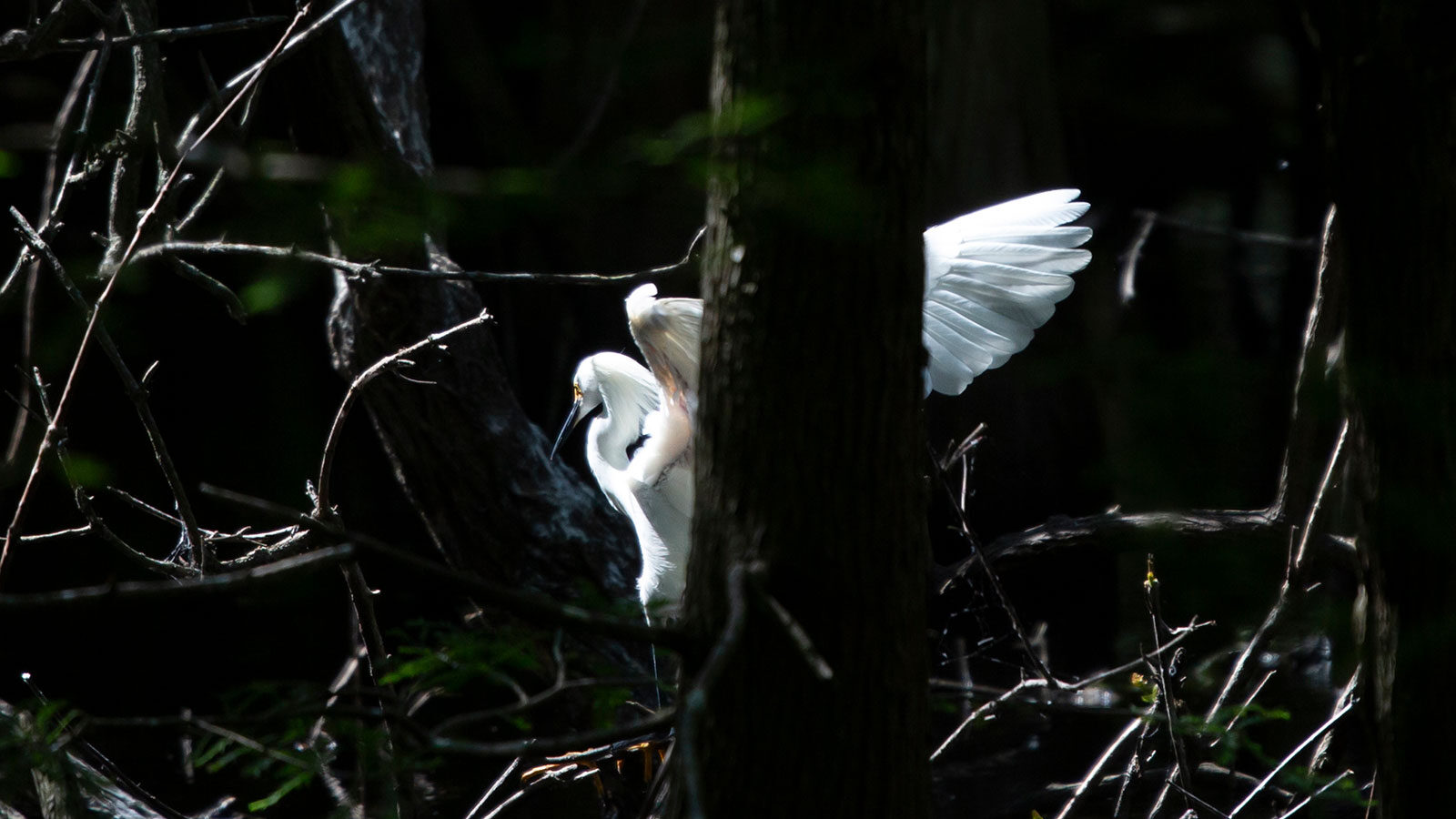
Did you know that great egrets fly about 25 miles per hour?
Great Egrets
at
a Glance

Key Features:
Great egrets are medium or large tall, white birds with long necks, orange beaks, and black legs. They have long plumes during mating season.
Least Concern - Population Unknown
Habitat:
Forests near lakes, marshes, ponds, rivers, streams, swamps, and wetlands
nesting habits:
Great egrets build nests in colonies, often with other herons, in trees or shrubbery in thickets or marshes out of stems, sticks, and twigs.
seasons great egrets are active in our area:
Spring, summer, fall, most winter
Diet:
Fish, amphibians, mice, reptiles
hunting Behavior:
Great egrets hunt in colonies by standing still or moving slowly in shallow water, then striking prey fast.
Commonly Confused With:
Great Blue Herons, Little Blue Herons, Snowy Egrets, and Wood Storks

Great egrets are often confused with little blue herons because both are light colored birds with long necks.

Great egrets are often confused with snowy egrets because both are white birds with black legs.